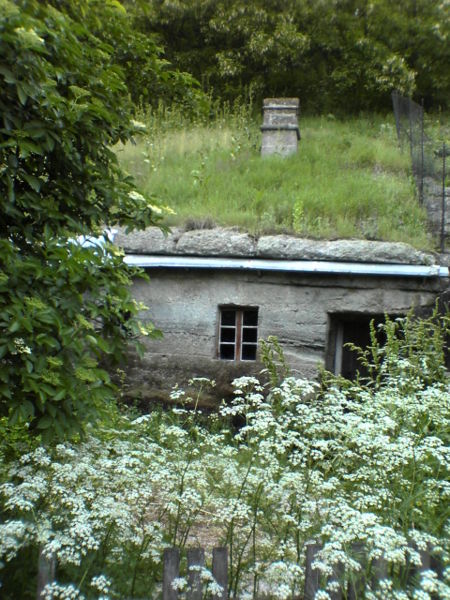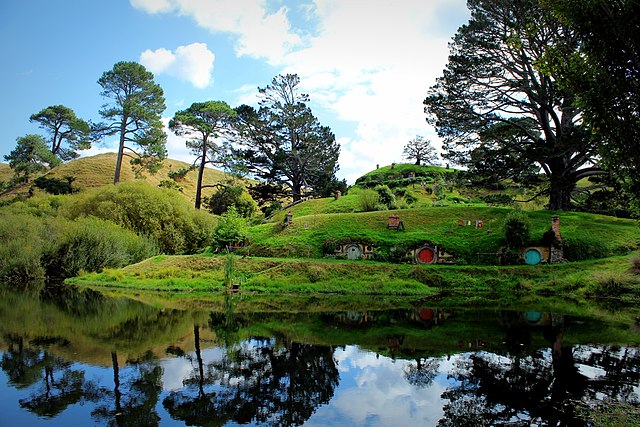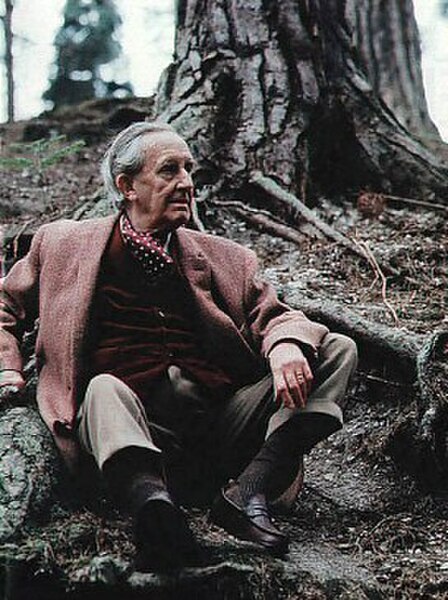Underground living refers to living below the ground's surface, whether in natural or manmade caves or structures. Underground dwellings are an alternative to above-ground dwellings for some home seekers, including those who are looking to minimize impact on the environment. Factories and office buildings can benefit from underground facilities for many of the same reasons as underground dwellings such as noise abatement, energy use, and security.
An underground house in the Sassi di Matera, Italy
An underground jewellery shop in Coober Pedy
An example of an excavated house in Brhlovce, Slovakia
Hobbits are a fictional race of people in the novels of J. R. R. Tolkien. About half average human height, Tolkien presented hobbits as a variety of humanity, or close relatives thereof. Occasionally known as halflings in Tolkien's writings, they live barefooted, and traditionally dwell in homely underground houses which have windows, built into the sides of hills, though others live in houses. Their feet have naturally tough leathery soles and are covered on top with curly hair.
Hobbit holes or smials as depicted in Peter Jackson's The Lord of the Rings film trilogy
Tolkien stated that he liked gardens, trees, and wearing waistcoats, just as hobbits did; he was often photographed with trees.
Tolkien dated the Shire to the time of the Diamond Jubilee of Queen Victoria, 1897, when Exmouth's Jubilee clock was built.
Fireworks (England's Royal Fireworks of 1749 pictured) are among the anachronistically modern material features of hobbits' lives.







